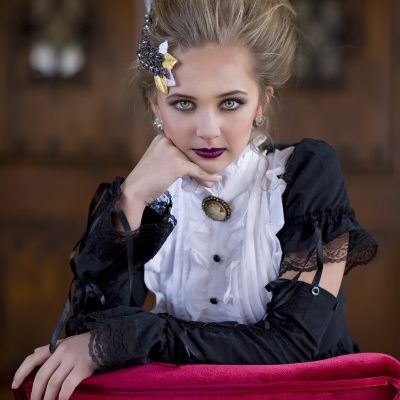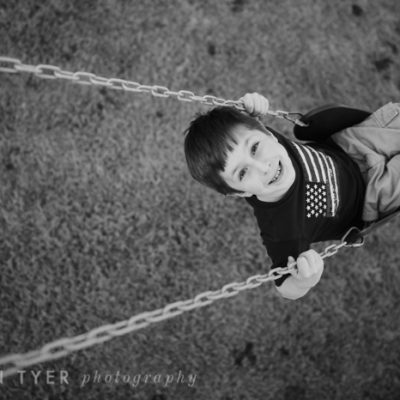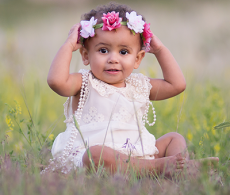by Guest Contributor Elizabeth Halford
Have you ever had a client claim that they don’t like their photos because they aren’t like the ones on your website? Or had a wedding client confused about why her photos are in B&W? Had any complaints at all? Unfortunately, it might be your fault. But not in the way they’re trying to make you believe. You may simply have not maintained their expectations.
Expectation management. It’s the single most important element of your business communication because if you don’t get it right, you’ll probably give up. Like I wanted to before I realized that it was me, not them. But fear not – you can manage your clients’ expectations with a few simple steps:
First Impressions – Expectation management begins before you even know they exist. When someone clicks through to your website, this is your only chance at a good first impression. And of course, it’s in tip-top shape with the best of the best of your work. And hopefully by the point you’ve launched yourself as a photographer who is now available for hire, you know who you are and what you want to be offering to your clients. If you don’t want to do maternity sessions, don’t show them on your website. If you love exploring a certain genre personally but aren’t ready to integrate it into your business, don’t show the work. Because if you do, you’re saying: “…and I could do this for you, too!”
Consistency – I’ve said before on my blog that you shouldn’t get into the business until you can consistently produce the same caliber of work over and over again. This means that you’re not just showing a few lucky shots you got on a shooting spree, but work which you are confident that you can reproduce for your new client so they don’t wonder if it was even you who took the photos they fell in love with in the first place.
Brand – Your images are the product you’re selling. And just like any company producing products, they need to maintain your brand identity with integrity. For example, you can pretty much expect that when you walk into the Apple store, you’ll walk out with something smooth, white, fast and sexy {ok…I’m a fangirl}. Wouldn’t you be like “…what on earth?” if you walked into the shiny, bright store to find a bulky, black, matte computer smack-dab in the middle of that store? I feel like that when I view a photographer’s portfolio and I see something like this:
- Image 1: soft
- Image 2: etherial
- Image 3: dreamy
- Image 4: super moody urban grunge
- Image 5: soft
- Image 6: dreamy
That sharp, grungy urban image throws the whole thing off. It’s clearly not part of the identity of that business. So this is where it’s so important to maintain vision about what your brand’s image is actually projecting and knowing what kind of photographer you are.
One way around this if you strongly identify with two different styles is to be very calculated about sending the right message to your clients. For instance, having the main page of your website be a choice between entering your urban portraiture and vintage lush websites. Or two different portfolios. Or two different branches of your business altogether with different websites, different marketing materials, different business cards, all meant to be drawing different clientele.
This post is about how I personally balance image consistency and creativity without sacrificing one or the other.
Editing – Going along with the above, your editing should remain consistent so your clients can picture their pictures and know exactly what they’re going to get if they hire you. And the editing should remain consistent throughout the post production process of each session individually. Don’t do some photos punchy and others soft. This will cut right through the storytelling power of viewing the images together and the capabilities the clients have for displaying them together.
When people pay for a session, they’re buying a product that doesn’t even exist yet. They’re buying faith in you and their faith will be stronger if they can look at your website, know exactly what you provide and what it will look like for their own session.
The most important question – When you get that first contact with a client, have a few important questions ready for them. The most important to me is asking “so what image(s) made you want to call me?” Then right off the bat, I know what they will love for their own session and they won’t be surprised with the results. More about that here.
Money – There’s no worry about a client getting sticker shock at their viewing session. Because my website clearly states the starting price of both a la carte prints and collections. This weeds out people who don’t want to pay at least that and gives them a starting point in their mind of what they’re looking at spending.
Booking – When they book a session, I explain how everything goes, how long it will be, whether I plan on posing or not, what the location is like and when they will see their photos.
So, you see, it’s all about communication. Communicating in words, yes, but also in imagery, brand integrity, customer service. It’s all about telling your client exactly what they’re going to get and giving it to them exactly.
{Further Reading}
Maintaining Artistic Expectations
Managing Client Expectations – Weddings
![]()
 About the Author: Elizabeth Halford is a professional photographer and blogger. She gives real photography advice in real.plain.english. Visit her on Facebook and join a community of photographers just like you!
About the Author: Elizabeth Halford is a professional photographer and blogger. She gives real photography advice in real.plain.english. Visit her on Facebook and join a community of photographers just like you!









Elizabeth I just LOVE everything you write (and click). as my teenage daughter would say, u rock! Thank you thank you thank you.
Always insightful. Thank you!!
I agree with just about everything you wrote here, Elizabeth. I only have one point, and perhaps it’s simply a point of clarification, and not contention! 🙂
When you write that mixing moody, ethereal, soft and dreamy with grungy on one’s site is inconsistent, I’d think that really depends on the client’s personality you are photographing…and how you present the images, as well.
For instance, I mostly photograph senior girls, so edgy and grungy don’t make an appearance all that often. But sometimes, I have an edgy, grungy girl.
Last spring, I photographed a senior girl who’s on the basketball team under an overpass against an abutment, with nothing but concrete and blacktop showing, in a straight-on, wide-stance pose looking directly at the camera, with her taking up perhaps only 1/5th of the image area. I also shot her in some very feminine, soft poses in natural surroundings w/o the basketball under her arm. And sometimes, I photograph a senior boy who truly wants more edgy than soft and dreamy! 🙂
Now, while I like your idea of separating styles into two sections of a site, I also think both dreamy and edgy can be a part of one individual’s personality (as was the case with the basketball player I noted above), so both facets really do belong together. For parents of kids like this, they deal with that mix of personality on a daily basis, and the kids themselves may not even see a division between their two sides, so why not show the two styles can be mixed effectively by at least peppering-in a few harder images with the softer images here and there? And vice-versa in the harder image collection, if the decision is made to go that route.
So, yes, I think if a mixed collection is presented correctly, it can be completely consistent. In fact, I think too much of a dreamy, reflective style can get boring for the viewer, who might like to see the photographer isn’t locked into one stylistic box. If the two styles are *completely* separated into two sections, that’s just one more hurdle to presenting all you can do to each viewer. Mixing a few of the styles from one collection into the other collection might entice a few more to look at both styles, instead of just the one they *think* they want for their images.
Other than this point, I think you’ve hit it out of the park with this post, Elizabeth, mentioning things that usually aren’t discussed all that much.
Ron Hildebrand